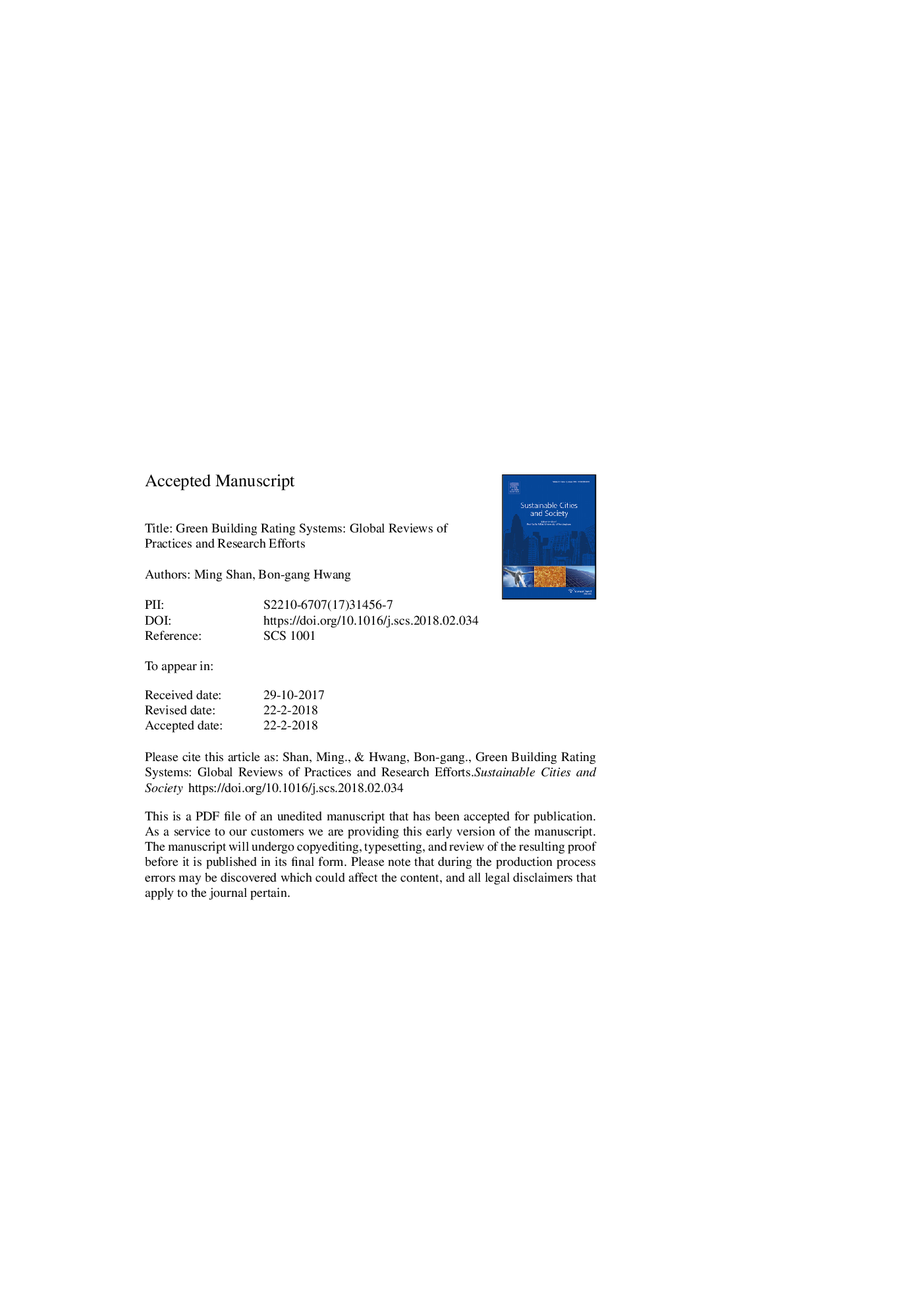| Article ID | Journal | Published Year | Pages | File Type |
|---|---|---|---|---|
| 6775019 | Sustainable Cities and Society | 2018 | 28 Pages |
Abstract
During the past two decades, a large number of Green Building Rating Systems (GBRSs) have been developed by the countries around the world in order to rate and certify green buildings. The aims of this paper are to review the prevailing GBRSs used worldwide, to identify the major research efforts conducted by the existing GBRS-related studies, and to propose the directions for the future GBRS research. To achieve these goals, a comprehensive literature review was conducted, from which 15 prevailing GBRSs were identified. The review reported that the earliest GBRS was launched in the 1990s and then a surge occurred in the 2000s. It also revealed that a large number of particular versions of GBRSs had been created to assess the sustainability of different types of built structures or the projects at different stages. Moreover, the review identified seven essential evaluation criteria that were commonly used by different GBRSs, and found that the most important evaluation criterion was “energy”, followed by “site”, “indoor environment”, “land and outdoor environment”, “material”, “water”, and “innovation.” Additionally, this paper revealed the major research efforts conducted by the existing GBRS studies and proposed the directions for the future research as well.
Keywords
Related Topics
Physical Sciences and Engineering
Energy
Renewable Energy, Sustainability and the Environment
Authors
Ming Shan, Bon-gang Hwang,
